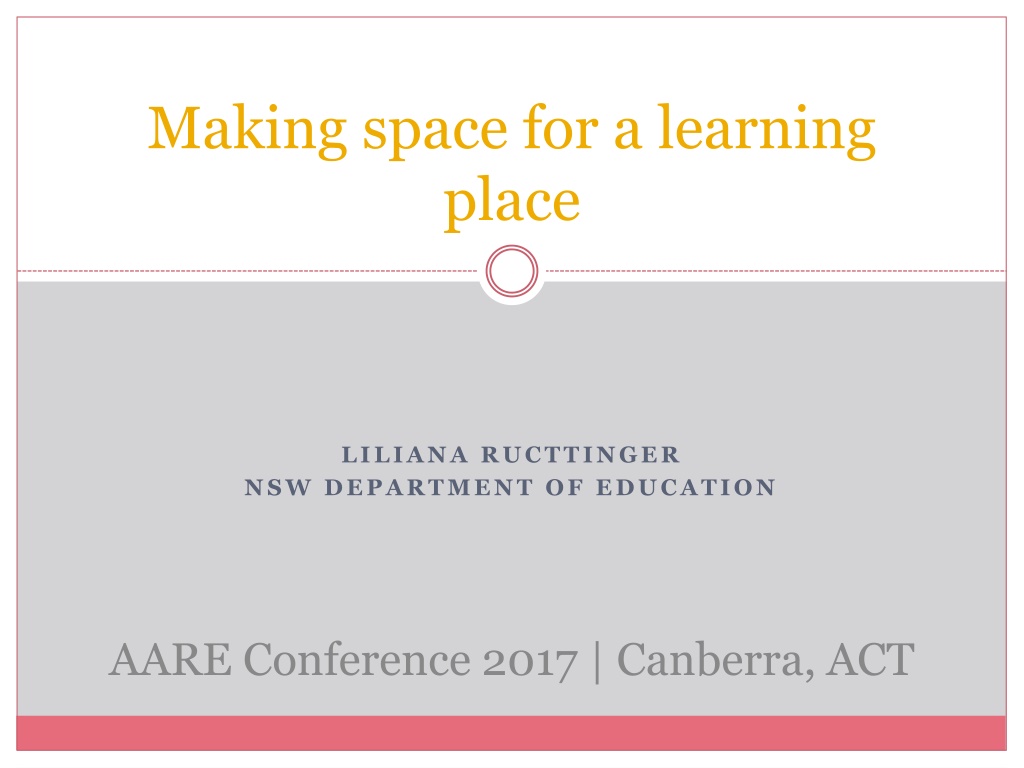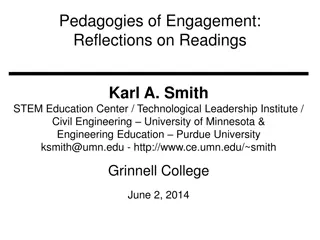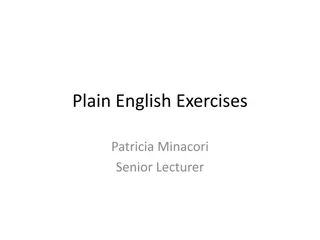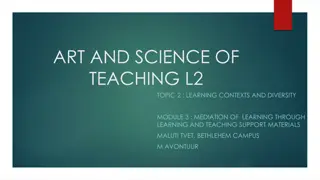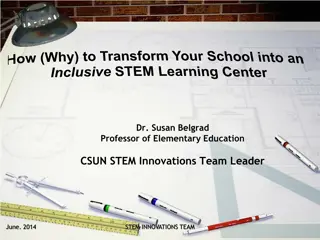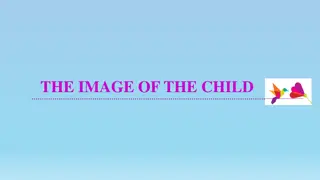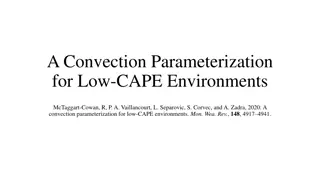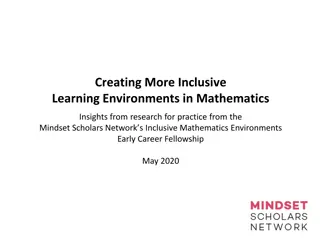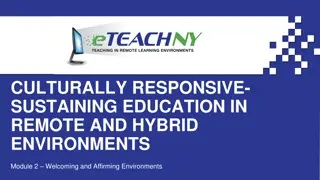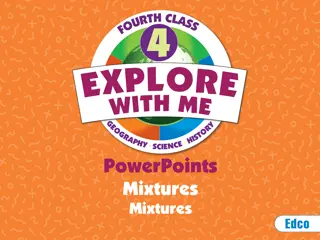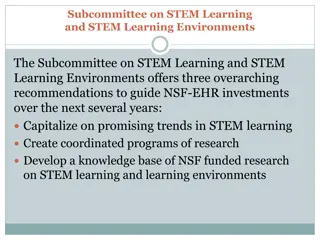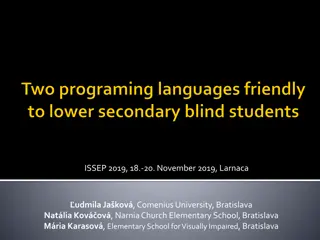Transforming Learning Environments: Challenges and Solutions
Exploring the concept of creating innovative learning spaces, this presentation delves into addressing wicked problems and change imperatives in education. Emphasizing the importance of 21st Century skills and general capabilities, it discusses the impact of quality learning environments, as well as innovative approaches that are learner-centered, inclusive, and technologically infused.
- Learning environments
- 21st Century skills
- Education challenges
- Innovative learning spaces
- Change imperatives
Download Presentation

Please find below an Image/Link to download the presentation.
The content on the website is provided AS IS for your information and personal use only. It may not be sold, licensed, or shared on other websites without obtaining consent from the author. Download presentation by click this link. If you encounter any issues during the download, it is possible that the publisher has removed the file from their server.
E N D
Presentation Transcript
Making space for a learning place LILIANA RUCTTINGER NSW DEPARTMENT OF EDUCATION AARE Conference 2017 | Canberra, ACT
Context Wicked problems | challenges | change imperatives Social Economic Technical Scientific Health Ecology
Context Wicked problems | challenges | change imperatives 21st Century skills | General capabilities Literacy Numeracy Informational and communication technology Critical and creative thinking Personal and social capability Intercultural understanding Social Economic Technical Scientific Health Ecology
Context Wicked problems | challenges | change imperatives 21st Century skills | General capabilities Literacy Numeracy Informational and communication technology Critical and creative thinking Personal and social capability Intercultural understanding Social Economic Technical Scientific Health Ecology
Context Wicked problems | challenges | change imperatives 21st Century skills | General capabilities+ Literacy Numeracy Informational and communication technology Critical and creative thinking Personal and social capability Intercultural understanding Leadership Entrepreneurship Holistic thinking Social Economic Technical Scientific Health Ecology
Impact on the quality of learning environments Learning space Physical conditions, pedagogical & psychosocial climate School or program Design, management, strategies, organisational climate Community Participation & support System Policies, infrastructures, coordination & support Bernard, 2012
Innovative Learning Environments Broadly Learner-centred Structured and well designed to promote autonomous learning Profoundly personalised Inclusive Social Specifically Polycentric or room designs without a focal point ICT infused Agile structural elements Student-friendly furniture
Learning space typologies Dovey & Fisher, 2014
Learning space typologies of Australian schools Dovey & Fisher, 2014
Space as a tool SAMR (repurposed) Redefinition: the learning space allows for the creation of new learning activities, previously inconceivable Modification: the learning space allows for significant learning activity redesign Augmentation: the learning space is used as a substitute, with functional improvement to the learning activity Substitution: the learning space is used as a substitute, with no functional change to the learning activity Transformation Enhancement Inspired by the work of Puentedura, 2006
General > Specific pedagogies General typology Presentation 25-150 students Large interactive 25-75 students Medium interactive 10-25 students Creative interactive 10-25 students Small interactive 2-5 students Reflection 1 student Dovey & Fisher, 2014
General > Specific pedagogies Specific pedagogy General typology Presentation 25-150 students Direct instruction Large interactive 25-75 students Think-Pair-Share Medium interactive 10-25 students Socratic pedagogy Creative interactive 10-25 students Learning-by-design Small interactive Project-based learning 2-5 students Reflection 1 student Metacognitive pedagogies Dovey & Fisher, 2014
Characteristics of different learning spaces Traditional ILEs Delivery Homogenous Individualised Personalised User focus Teacher-centred Student-centred Directedness Discipline Autonomy Freedom Compliance Conformity Creativity Agency Outcome Assimilation Individuality Dimensions Pedagogy Transmissive Didactic Constructivist Inquiry-based Modifiability Unresponsive Flexible Reflexive Technology use Substitution Augmentation Modification Redefinition
Archetypal arrangements Campfire Davis & Kappler-Hewitt, 2013 following David Thornburg
Archetypal arrangements Watering hole Davis & Kappler-Hewitt, 2013 following David Thornburg
Archetypal arrangements Cave Davis & Kappler-Hewitt, 2013 following David Thornburg
Archetypal arrangements: extended Sandpit Inspired by the work of David Thornburg
Archetypal arrangements: extended Yarning circle Inspired by the work of David Thornburg
Archetypal arrangements: extended Amphitheatre Inspired by the work of David Thornburg
Classroom spatial planning framework General pedagogy Group size Specific pedagogies Space type Archetypes Presentation Vary Direct Instruction A, B, C, D, E Campfire > Amphitheatre (small > large groups) Large Interactive 25-75 students Collaborative teaching C, D, E Campfire > Watering hole > campfire 15 groups of 5 Think, Pair, Share 25 groups of 3 Medium interactive 10-25 students Community of Inquiry A, B, C, D, E? Yarning circle Creative interactive 10-25 students Learning by Design A, B, C, D, E? Sandpit Small interactive 2-5 students Project Based Learning A, B, C, D, E? Watering hole Reflection 1 Personalised learning IMPROVE A, B, C, D, E Cave
Space as a tool, not as a challenge Pedgogically-relevant factors What does this ILE afford to help me achieve the learning goals? Universal Design for Learning Representation Action and expression Engagement
Thank you LILIANA.RUCTTINGER@DET.NSW.EDU.AU
